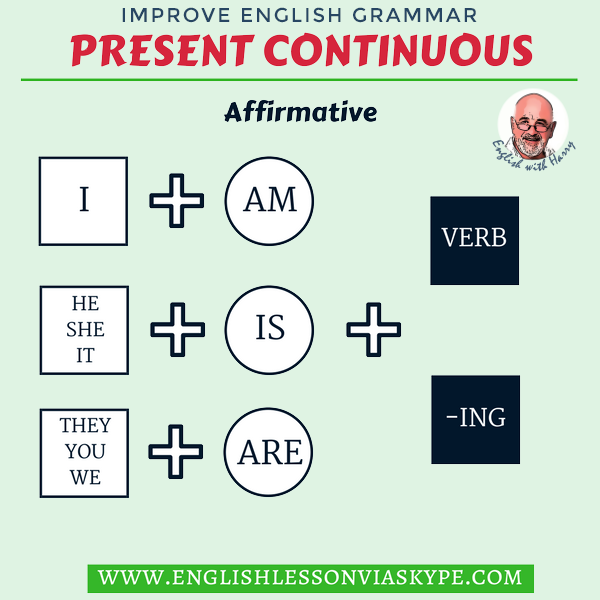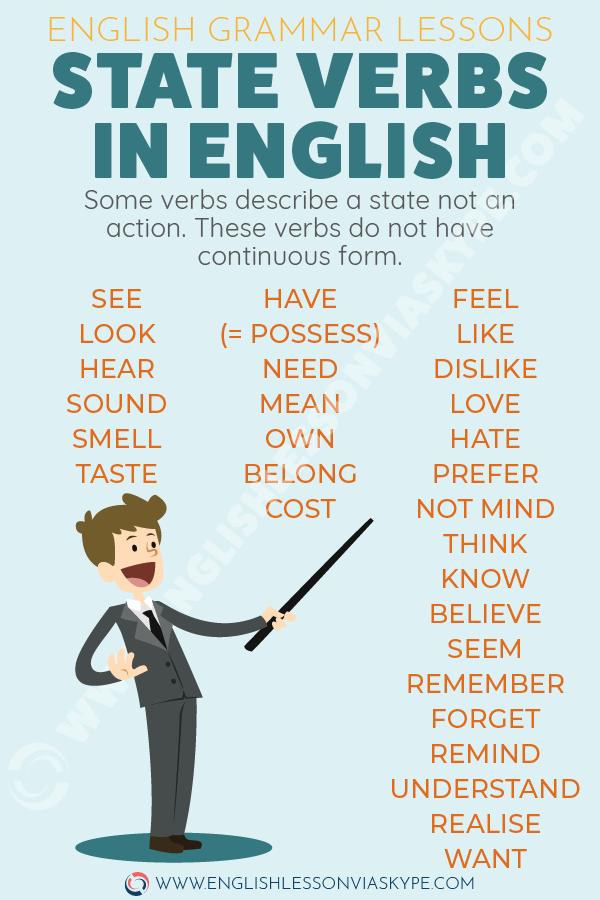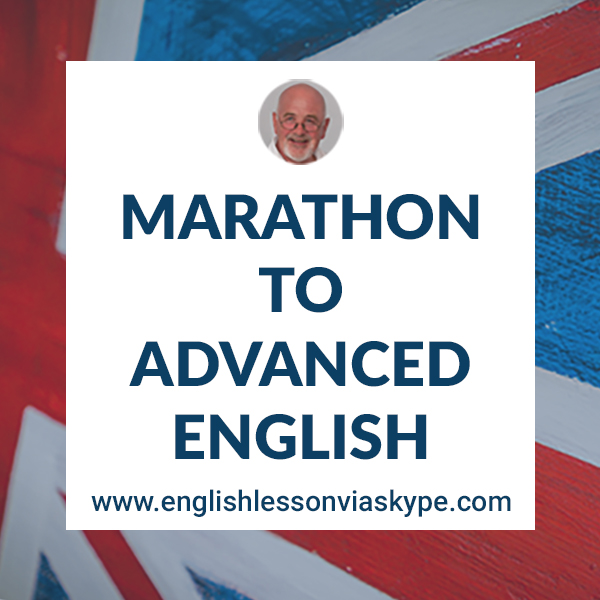The following sets out the use of the Present Continuous format of verbs. There are examples given in each situation.
Scroll down to watch a short video lesson and complete an interactive quiz.
The present continuous tense in English
How to Form the Present Continuous Tense
The Present Continuous tense is formed with the present tense of the verb “to be” and the present participle of the verb (verb + -ing).

Intermediate to Advanced English Marathon

INSANITY: doing the same thing over and over again and expecting different results.
Albert Einstein
- What you'll learn:
- better understanding of more complex grammar structures
- advanced English vocabulary words
- British & American slang
- perfect your listening skills through practing different accents
- This marathon is for you if you're:
- stuck at an intermediate English level
- tired of confusing explanations
- a mature student
- shy & introverted
Verbs are not normally used in the Present Continuous
Some verbs are not normally used in the Present Continuous form. We usually use the following verbs in simple tenses only:
- know
- understand
- forget
- prefer
- want
- remember
- like
- hate
- need
Present Continuous relates to something that is usually happening at the time we are speaking.
For example:
🚗 Michael goes to work every day in his car. Today he is driving to work in his car.
Michael is in his car now so we can use the Present Continuous to describe the act.
Michael is driving to work in his car (the verb: to drive, the present continuous: is driving).
There are several other situations when it is appropriate to use the Present Continuous. These are as follows:
1. When you are doing something not necessarily now at the time we are talking but close to that time.
Example:
Michael and his friend Mary are talking over lunch. Michael says “I am reading (to read) a really good book now. I will tell you about it when I finish”.
This does not mean he is reading it whilst talking to Mary but is reading it around that time and continues to do so.
2. When something is being done around a period of time close to the present.
Example:
Michael is working (to work) hard today. Or Michael is not skiing (to ski) this winter because he injured his knee.
3. Finally we use Present Continuous when we talk specifically about situations that are changing.
Example:
The weather is improving (to improve) quickly. or The temperature is falling (to fall) fast. or The winter snow is melting (to melt) now.
Signal Words used with the Present Continuous
- now
- at the moment
- Listen!
- Look!
- tonight
- in the morning/in the afternoon/in the evening
- this week/this month/this year
- today
- right
- now
- these days
List of State Verbs in English

Share and help other students to improve English skills
Check your understanding by doing this short exercise. You can write your answers below.
Exercise:
Try this exercise. You need to put the verb in brackets into the correct format using Present Continuous.
- Please be quiet. I ____________(try) to concentrate.
- Look! It ________________ (snow).
- Why _________________ (you/look) at me like that? Did I say something wrong?
- You ____________(make) a lot of noise. Can you be a little bit quieter?
- Excuse me, I ___________________ (look) for a phone booth. Is there one near here?
How to use stative verbs in English
This video English lesson explains when you can use English stative verbs in a continuous format.
Quiz - Present Simple vs Present Continuous
More Information
The following links will help you to learn new English Idiomatic Expressions, increase your vocabulary and improve your English speaking skills:


